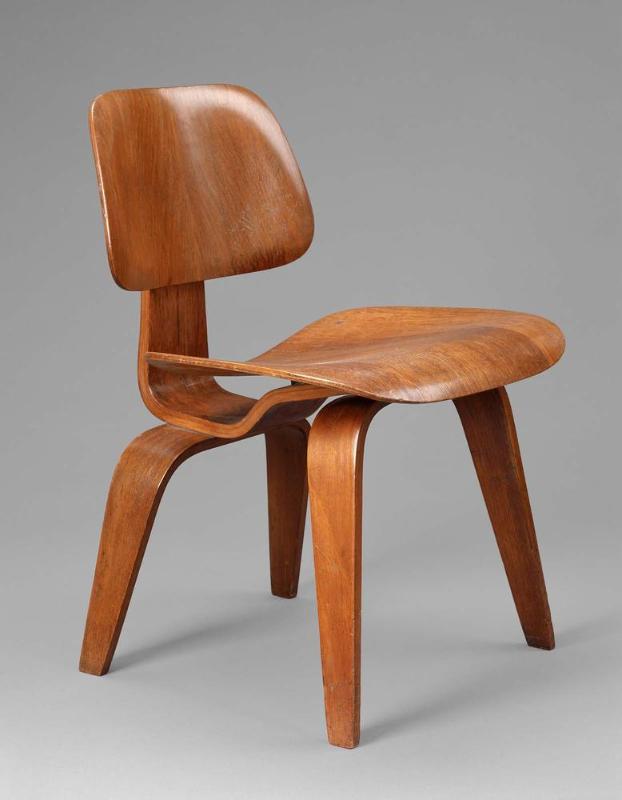DCW (Dining Chair Wood)
Charles Eames
(American, 1907–1978)
Evans Products Company (Molded Plywood Division)
(active 1943–1946)
Herman Miller Furniture Company
(active 1923–present)
designed 1945–46, made 1946–47
Object PlaceGrand Haven, Michigan
Object PlaceVenice, California, United States
Medium/TechniquePlywood with walnut veneer, rubber
Dimensions73.34 x 48.89 x 52.07 cm (28 7/8 x 19 1/4 x 20 1/2 in.)
Credit LineGift of Edward J. Womley
Accession number1975.32
On View
Not on viewClassificationsFurniture
Collections
In the early 1940s, designers and newlyweds Charles and Ray Eames pioneered a production method to simultaneously bend plywood in more than one direction, using their homemade Kazam machine. With this innovation, which the artists named for its speed and efficiency-you put in a piece of wood and "Kazam!" It's bent!-they won a commission from the U.S. Navy to design plywood leg splints and stretchers for wounded sailors, featuring compound curves to support the body. They applied the same technology after the war in the body-conforming design of the DCW and DCM. This chair was exhibited in 1947 at the Museum of Modern Art, after which the Eameses gave it to their friend and fellow furniture designer Edward J. Wormley. This text was adapted from Ward, et al., MFA Highlights: American Decorative Arts & Sculpture (Boston, 2006) available at www.mfashop.com/mfa-publications.html.
CopyrightUsed with permission. Herman Miller, Inc.® Eames®designed 1955, manufactured 1964
about 1927–1928
designed 1945–46; made 1946–47
designed 1945–46, made about 1950–55
Designed about 1946; produced about 1946–47
1986
1945
Designed 1957, manufactured 1964
designed 1957, manufactured 1963
about 1700–20




